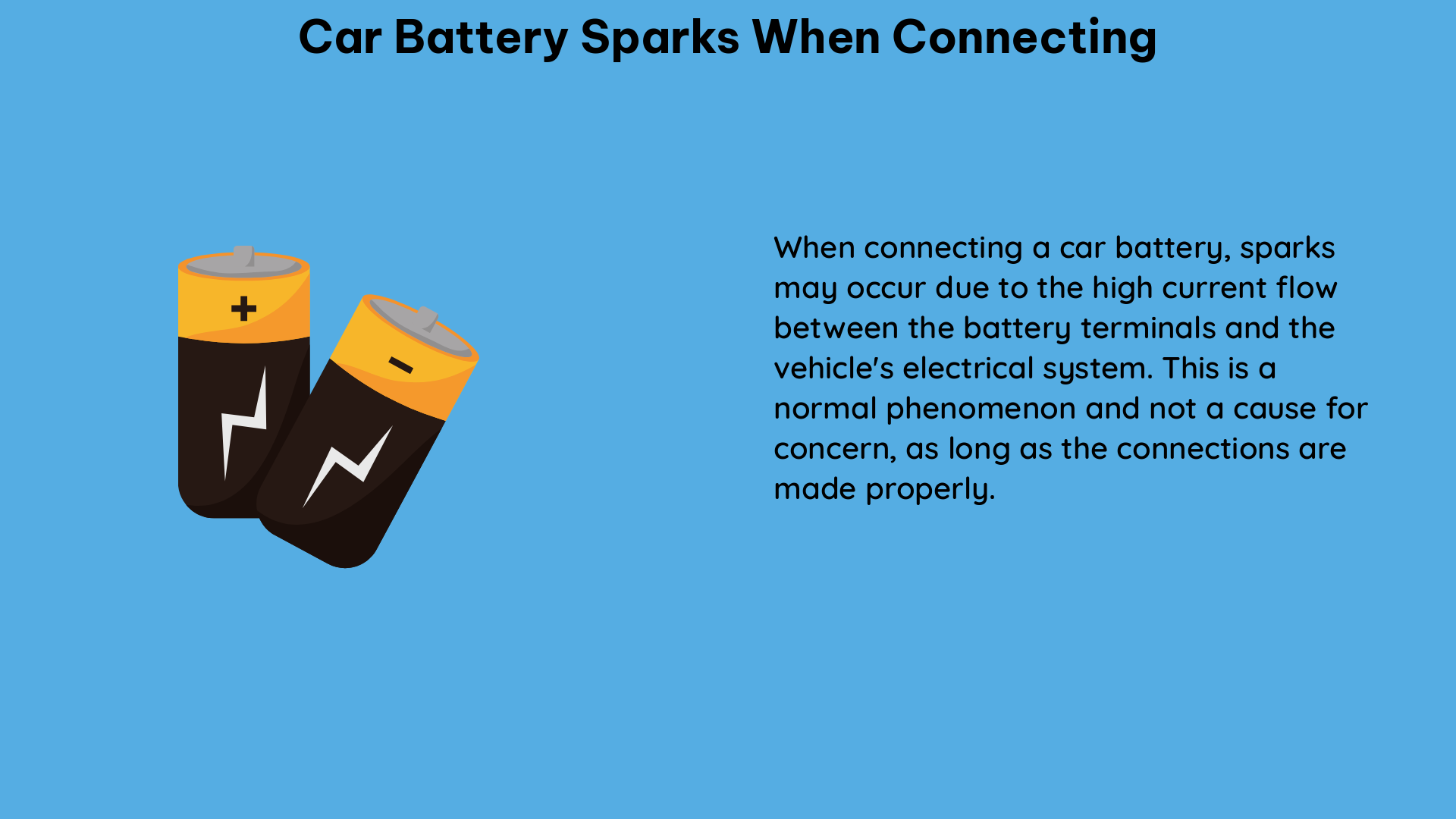Car battery sparks when connecting are a common occurrence, often caused by a high current draw or a load on the battery. This spark happens because something is drawing so much current that it overheats the tiny point of contact, causing it to spark. The spark can be more pronounced in some systems than others, such as in 8s systems where the voltage and current are higher.
Causes of Car Battery Sparks
High Current Draw or Load on the Battery
The primary cause of car battery sparks when connecting is a high current draw or a load on the battery. This can happen when electronic devices or accessories are still on or in standby mode, even when the ignition is turned off. For example, the interior light, glove box light, or other accessories can draw enough current to cause a spark when connecting the battery.
The amount of current draw can vary depending on the specific vehicle and the accessories installed. In a typical 12V car battery system, the current draw can range from a few milliamps (mA) for a standby mode to several amps (A) for high-power accessories. When the battery is connected, the sudden influx of current can cause the spark.
Capacitor Charging in Electric Vehicles
In electric vehicles, the spark can be caused by the ESC (Electronic Speed Controller) capacitors initially charging when the battery is connected to power. This is a normal occurrence and is not a cause for concern. The capacitors in the ESC are used to smooth out the power delivery and protect the electronic components from voltage spikes.
When the battery is connected, the capacitors need to charge up to the full system voltage, which can cause a brief spark. This is a common phenomenon in electric vehicles and is not an indication of a problem with the battery or the electrical system.
Voltage and Current Differences
The spark can be more pronounced in some systems than others, such as in 8s (8-cell) battery systems where the voltage and current are higher. In these high-voltage and high-current systems, the spark can be more intense due to the increased energy being released at the point of contact.
For example, an 8s lithium-ion battery pack can have a nominal voltage of 29.6V (8 cells x 3.7V per cell) and a maximum discharge current of several hundred amps, depending on the battery capacity and the load. The higher voltage and current in these systems can lead to more pronounced sparks when the battery is connected.
Preventing Car Battery Sparks

To prevent sparking when connecting the car battery, there are a few options:
Use a Connector with a Resistor
One effective way to prevent sparking is to use a connector with a resistor built-in, such as the XT90-S connector. This type of connector has a small resistor that is wired in series with the positive terminal, which helps to limit the initial current flow and prevent the spark.
The XT90-S connector is commonly used in high-power applications, such as electric vehicles, drones, and RC models, where the risk of sparking is higher. The resistor in the connector helps to gradually charge the capacitors and other electronic components, reducing the likelihood of a spark.
Turn Off Accessories and Circuits
Another way to prevent sparking when connecting the car battery is to turn off all accessories and circuits before making the connection. This includes turning off the ignition, interior lights, glove box lights, and any other electronic devices or accessories that may be drawing current from the battery.
By ensuring that all the loads are turned off, you can minimize the current draw and reduce the likelihood of a spark when the battery is connected. This is especially important in older vehicles or vehicles with a lot of aftermarket accessories installed.
Disconnect the Negative Terminal First
When disconnecting the car battery, it’s generally recommended to disconnect the negative terminal first. This helps to prevent any potential sparks or short circuits, as the negative terminal is typically connected to the vehicle’s chassis or ground.
By disconnecting the negative terminal first, you can avoid creating a direct connection between the positive terminal and the vehicle’s metal components, which could otherwise cause a spark.
Conclusion
Car battery sparks when connecting are a common occurrence and are typically caused by a high current draw or a load on the battery. The spark can be more pronounced in some systems, such as in 8s battery systems, due to the higher voltage and current.
To prevent sparking when connecting the car battery, you can use a connector with a resistor built-in, such as the XT90-S connector, turn off all accessories and circuits before making the connection, and disconnect the negative terminal first when disconnecting the battery.
By understanding the causes of car battery sparks and following these preventive measures, you can safely and effectively connect and disconnect your car’s battery without the risk of damaging sparks.
References:
- Battery Sparks When Connecting | The Diesel Stop
- Sparks when Connecting Battery – R/C Tech Forums
- Sparks fly when connecting batteries | SteelSoldiers
- What might cause a spark when connecting the battery cables …
- Lots of Sparks When Connecting Negative Battery Terminal

The lambdageeks.com Core SME Team is a group of experienced subject matter experts from diverse scientific and technical fields including Physics, Chemistry, Technology,Electronics & Electrical Engineering, Automotive, Mechanical Engineering. Our team collaborates to create high-quality, well-researched articles on a wide range of science and technology topics for the lambdageeks.com website.
All Our Senior SME are having more than 7 Years of experience in the respective fields . They are either Working Industry Professionals or assocaited With different Universities. Refer Our Authors Page to get to know About our Core SMEs.